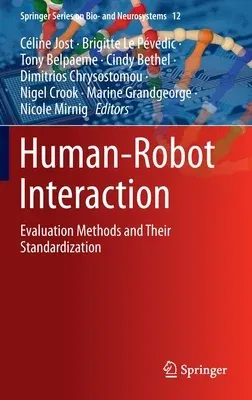Human-Robot Interaction: Evaluation Methods and Their Standardization (2020)Hardcover - 2020, 14 May 2020

Qty
1
Turbo
Ships in 2 - 3 days
In Stock
Free Delivery
Cash on Delivery
15 Days
Free Returns
Secure Checkout

Part of Series
Springer Bio- And Neurosystems
Print Length
385 pages
Language
English
Publisher
Springer
Date Published
14 May 2020
ISBN-10
3030423069
ISBN-13
9783030423063
Description
Product Details
Book Edition:
2020
Book Format:
Hardcover
Country of Origin:
NL
Date Published:
14 May 2020
Dimensions:
23.39 x
15.6 x
2.39 cm
ISBN-10:
3030423069
ISBN-13:
9783030423063
Language:
English
Location:
Cham
Pages:
385
Publisher:
Weight:
775.64 gm